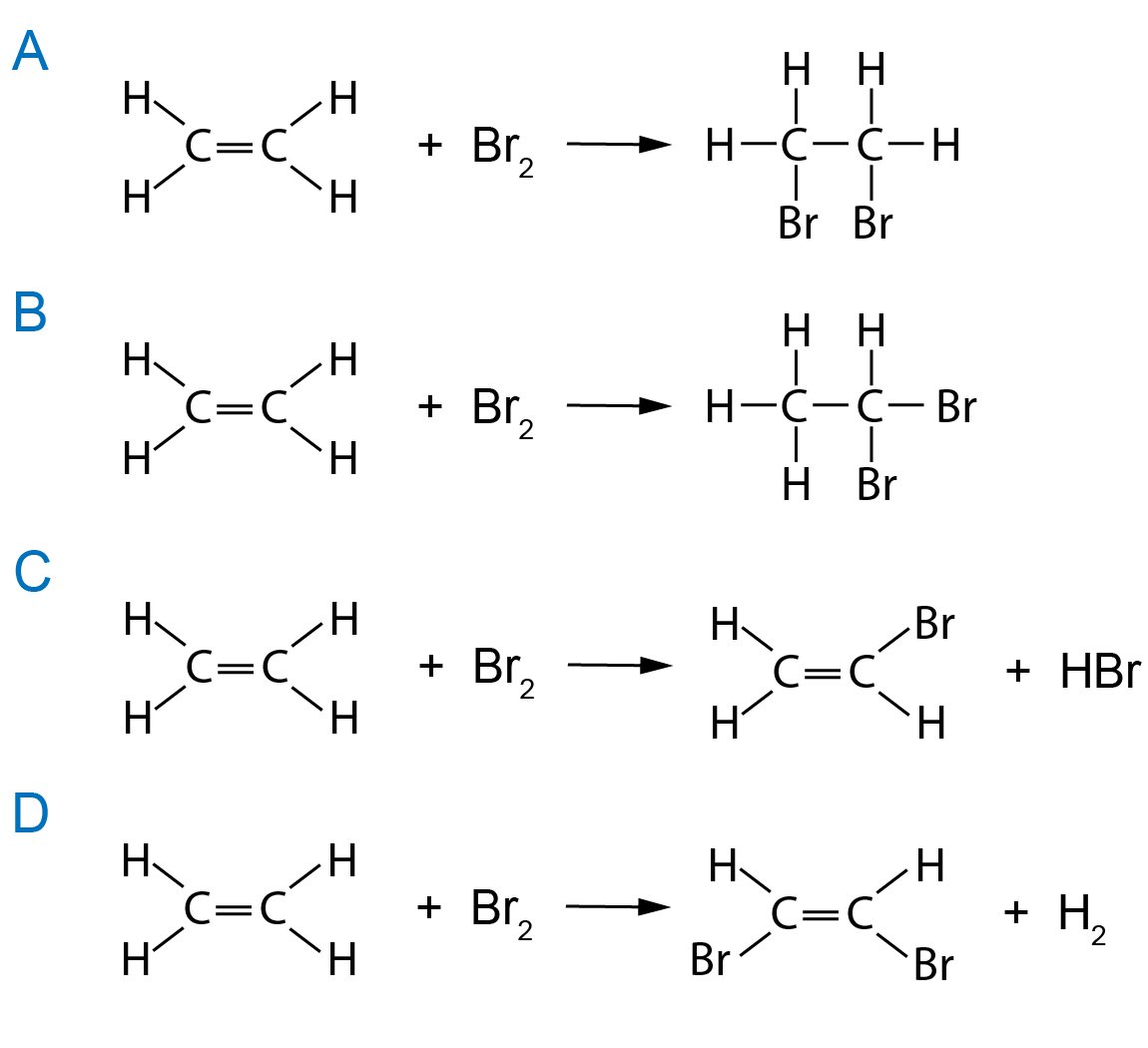| (Not Double Science - Chemistry GCSE Only) | ||||||||||||||||
1. The structures of four organic compounds are shown:
|
||||||||||||||||
Which statement is NOT correct?
|
||||||||||||||||
2. Decane (C10H22) can be split into propene (C3H6) and heptane (C7H16) by cracking. These 3 molecules can all be described as ..
|
||||||||||||||||
Q3-5 Alkenes can react with many substances and can be used to make polymers. 3. The equation for the reaction between ethene and bromine water is … |
||||||||||||||||
 |
||||||||||||||||
4. The correct equation for the polymerization of ethene is …..
|
||||||||||||||||
| 5. Propene reacts with hydrogen when heated in the presence of a nickel catalyst. The product formed and the type of reaction occurring is …. | ||||||||||||||||
|
||||||||||||||||
6. Compound X and compound Y were both added separately to aqueous bromine.
The observations made would be that the bromine solution ….. |
||||||||||||||||
|
||||||||||||||||
7. The polymer PVA is used in paints and adhesives. It has the following structural formula:
The type of polymerization used to make PVA and the structural formula of the monomer is: |
||||||||||||||||
|
||||||||||||||||
Q8 – 9: Ethanol is present in alcoholic drinks and is produced by the fermentation of carbohydrates such as glucose. |
||||||||||||||||
8. The conditions used for fermentation are …..
|
||||||||||||||||
9. The products formed in the fermentation of glucose are ethanol and…..
|
||||||||||||||||
10. CH3OH, C2H5OH and C3H7OH are the first three members of the alcohol family. Deduce the general formula for the family of alcohols:
|
||||||||||||||||